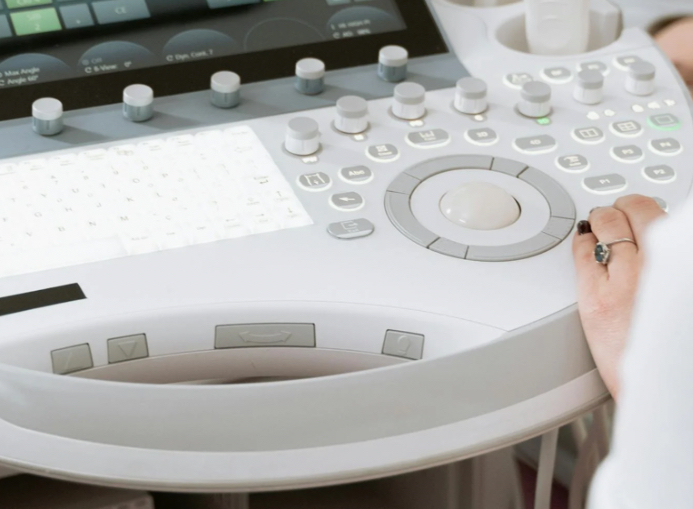The Utrecht suture pattern, named after the city of Utrecht in the Netherlands, is a distinctive and innovative technique utilized in veterinary medicine, particularly in the field of surgery. This technique is revered for its efficacy in creating secure, tension-free closures in hollow organs such as intestines and uterus, which are often challenging to suture due to their delicate nature and the necessity to maintain the integrity of their walls while ensuring the passage within remains unobstructed.
Historical Context and Development
The genesis of the Utrecht suture pattern traces back to the mid-20th century, when veterinarians and surgeons were seeking better methods to manage post-surgical complications such as dehiscence and leakage from sutures. Traditional suturing techniques often fell short in providing the needed strength and security, especially in organs subjected to constant movement or internal pressure.
The development of the Utrecht suture pattern marked a significant advancement. It offered a solution that not only secured the surgical site but also promoted healing by minimizing tissue trauma and ensuring a tight seal. This method was a departure from the simple interrupted or continuous sutures, providing a more reliable and resilient closure for internal organs.
Technical Insights
The Utrecht suture pattern is renowned for its precision and efficacy in veterinary surgical applications, thanks to its innovative approach to closing wounds in hollow organs. The intricacies of this technique and the advantages it offers can be summarized as follows:
- Continuous, Inverting Suture Technique: The Utrecht pattern employs a continuous threading of the suture material that inverts the edges of the tissue inward. This methodical inversion plays a pivotal role in the technique’s effectiveness;
- Looping Method: The suture material is looped around the edges of the wound in a unique manner that ensures the inward folding of tissue edges, reducing the risk of suture line exposure to the organ’s lumen;
- Reduced Contamination Risk: By inverting the tissue edges inward, the technique minimally exposes the suture line to the organ’s interior, thus significantly lowering the possibility of contamination and infection;
- “Locking” Mechanism: A distinctive feature of the Utrecht pattern is its locking mechanism, achieved as the suture is threaded through each loop. This mechanism evenly distributes tension along the suture line;
- Even Tension Distribution: The even distribution of tension is crucial for maintaining the integrity of the closure without over-tightening at any point, which is essential for preventing tissue tears or leaks.
This meticulous design and execution of the Utrecht suture pattern underscore its value in veterinary surgery. The technique not only ensures a secure and robust closure but also promotes optimal healing conditions by minimizing tissue damage and the risk of infection. Surgeons employing this method can be confident in the resilience of the suture, knowing that it is designed to withstand the pressures and movements inherent to the body’s internal organs. As such, the Utrecht suture pattern remains a preferred choice for procedures involving hollow organs, reflecting a harmonious blend of surgical precision, safety, and care for animal welfare.
With these points in mind, the Utrecht suture pattern emerges not just as a technique but as a paradigm of surgical excellence in veterinary medicine. It exemplifies how a deep understanding of anatomy and biomechanics can lead to innovations that significantly improve surgical outcomes and animal health.
Applications in Veterinary Surgery
The Utrecht suture pattern finds its primary application in gastrointestinal surgery, such as resection and anastomosis procedures, where sections of the intestine are surgically removed and the remaining parts are reconnected. The technique’s ability to provide a secure and tight seal makes it ideal for these situations, as it significantly reduces the risk of leakage, a common and serious complication that can lead to peritonitis.
Additionally, the technique is used in cesarean sections and other surgeries involving the uterus, where a leak-proof closure is paramount to prevent infection and ensure the health of both the mother and offspring. The Utrecht pattern’s effectiveness in these applications underscores its importance in veterinary surgical practice.
Advantages and Limitations
The primary advantage of the Utrecht suture pattern is its robustness and reliability in creating closures that withstand internal pressures and movements, reducing post-operative complications. Its design minimizes tissue trauma, promoting faster and healthier healing. Furthermore, the technique is versatile and can be adapted to different sizes and types of tissue, making it a valuable tool in a veterinarian’s surgical repertoire.
However, the Utrecht suture pattern is not without its limitations. The technique requires a high level of skill and precision to execute correctly. Improper application can lead to inadequate closure or excessive tissue inversion, potentially causing obstruction or ischemia. Additionally, the technique may not be suitable for all types of tissues or conditions, requiring surgeons to assess its appropriateness on a case-by-case basis.
Conclusion
The Utrecht suture pattern is a testament to the evolution of veterinary surgical techniques, offering a solution to the complex challenge of securing closures in hollow organs. Its development and application have significantly improved surgical outcomes, reducing complications and enhancing the recovery process for countless animals. As veterinary medicine continues to advance, the Utrecht suture pattern remains a cornerstone technique, embodying the principles of innovation, precision, and care that define the field.
In the panorama of veterinary surgery, the Utrecht suture pattern is more than just a method; it is a reflection of the ongoing pursuit of better, safer, and more effective surgical interventions. As research and technology push the boundaries of what is possible, techniques like the Utrecht suture pattern serve as the foundation upon which future advancements will build, continuing to improve the lives of animals around the world.
FAQs:
The Utrecht suture pattern is distinct in its continuous, inverting mechanism that loops the suture around the wound’s edges, inverting the tissue inward. This technique reduces the risk of contamination and ensures an even distribution of tension across the suture line, which is crucial for the integrity and healing of the surgical site.
The Utrecht suture pattern shines in its role during surgeries on hollow organs, such as the intestines and uterus, where ensuring a secure, leak-proof closure is paramount. Its most notable applications include gastrointestinal surgery, where the integrity of the intestinal tract must be meticulously restored to prevent leakage of contents, leading to peritonitis—a potentially life-threatening condition. Similarly, during cesarean sections, the technique ensures a robust closure of the uterine wall, critical for the recovery and health of both the mother and offspring. This pattern is particularly favored in veterinary surgery due to its reliability and the added safety it provides against common post-operative complications associated with hollow organ surgeries.
Beyond its effectiveness in reducing the risk of leaks and infections, the Utrecht suture pattern is celebrated for its ability to distribute tension evenly along the suture line, significantly minimizing the likelihood of tears or suture failure. This even tension distribution is key in promoting optimal healing, as it avoids placing undue stress on any single point along the incision. Additionally, by inverting the tissue edges inward and minimizing exposure of the suture line, the pattern greatly reduces the chances of infection, a crucial factor in post-operative care. The technique’s emphasis on minimizing tissue trauma further accelerates the healing process, allowing for quicker recovery times and less discomfort for the animal, which is always the ultimate goal in veterinary care.
Despite its many benefits, mastering the Utrecht suture pattern does require a steep learning curve, demanding precise technique and a deep understanding of the tissue being sutured. Surgeons must be adept at adjusting their technique to the specific requirements of each surgical site, taking into account factors such as the thickness of the tissue and the level of tension needed to achieve an optimal closure. Misapplication can lead to issues such as excessive inversion, which might compromise blood flow to the tissue, or inadequate closures that risk dehiscence. Furthermore, its application might be limited in tissues that are too fragile or in cases where the organ’s anatomy does not permit an effective inverting suture pattern. Thus, while the Utrecht suture pattern is a powerful tool in veterinary surgery, its use must be judicious, guided by a thorough assessment of each individual case.
By reducing the risk of surgical complications and promoting quicker healing, the Utrecht suture pattern directly contributes to improved outcomes for animals undergoing surgery. This leads to less post-operative discomfort and a faster return to normal activities, enhancing the overall welfare of the animal.



